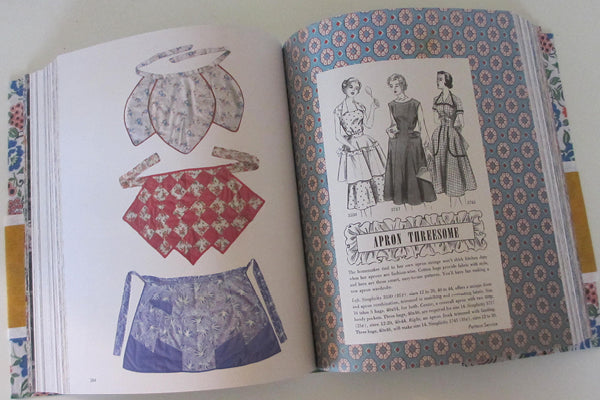By Patricia Belyea
SEATTLE WA Let me explain what I received in my mailbox last week. First there was an unassuming white corrugated box. Inside was a chunky book packaged in a petite feed sack with a paper belly band and an effusive thank-you note.

The next layer was a dust cover. By refolding the dust jacket, I could dress my book in four different feed sack designs. Very unexpected and interactive!


The treasure inside was Feed Sacks, The Colourful History of a Frugal Fabric, written by Linzee Kull McCray. A pageant of history, stories, photos, and fabric swatches, the book captured my curiosity. As a yukata cotton aficionado, I completely understand how one textile can be so irresistible.
A compelling writer, McCray revealed “It was not until 2010 that feed sacks surfaced in my life. Historian and collector Michael Zahs spoke about them at my quilt guild meeting, and I was smitten and wrote about them every chance I got." McCray then began her descent into Feed Sack Wonderland with the purchase of a box of vintage feed sacks on Craigslist.
Partnering with publisher Janine Vangool of UPPERCASE, these two textile lovers shone a light on every aspect of printed feed sack glory. Janine added her editorial savvy and design ingenuity to make the book a total delight.

When you think about the early days of American and Canadian history, feed and flour were bought in barrels. The invention of the sewing machine, the availability of cheap cotton, and the ease of transporting sacks transformed the industry.

The book takes you back to early textile mills weaving the cotton, the die-cutting desk of designer Claude Holsapple (you'll want to read about him), printing plants, and sewing rooms.

I especially liked learning about Hutchinson Bag Company in Kansas that still manufactures feed and food sacks today. Now known as Hubco, the company made the contemporary flour sack wrapping my book. Called feed sacks, only 12% of cotton sacks were filled with animal feed.

And 52% were filled with flour used by domestic consumers. As marketing sophistication grew, graphics with flour mill names and logos were replaced with appealing patterns. The sacks were promoted as fabric for kitchen curtains, day dresses (requiring three to four sacks), aprons, children's clothes, and more.


A favorite section talked about quilts made with flour sacks including double-wedding ring, crazy, and star quilts!

The last third of this 544-page tome displays feed sack swatches from five major collectors—Gloria Hall, her grandson Paul Pugsley, Charlene Brewer, Janine Vangool, and Sharon Forth. Each has a story about their fascination with this frugal fabric.


I have my own story: growing up in a family of six kids, my mother baked bread twice a week—four loaves of white, four loaves of brown. Our flour came in heavy cotton bags printed with oversized ginghams. I remember our summer attire— pop-tops paired with elastic-waisted shorts, sewn by Mom out of flour sacks.

The realm of flour sacks ended in 1964 with the low cost of paper bags and the decline of home sewers. Whether you were around in those days or not, how have you been touched by modest feed sacks?
There’s much more to enjoy about feed sacks! To purchase Feed Sacks: The Colourful History of a Frugal Fabric +click here
Feed Sacks is volume 'F' in the UPPERCASE Encyclopedia of Inspiration.
Readers who supported the project during the pre-order stage received a contemporary dress print sack as a special package for their book. Volumes 'B' and 'S', Botanica and Stitch•illo will be published in 2017.
Press photo of Linzee by Paul McCray. Book photography © UPPERCASE Magazine.










